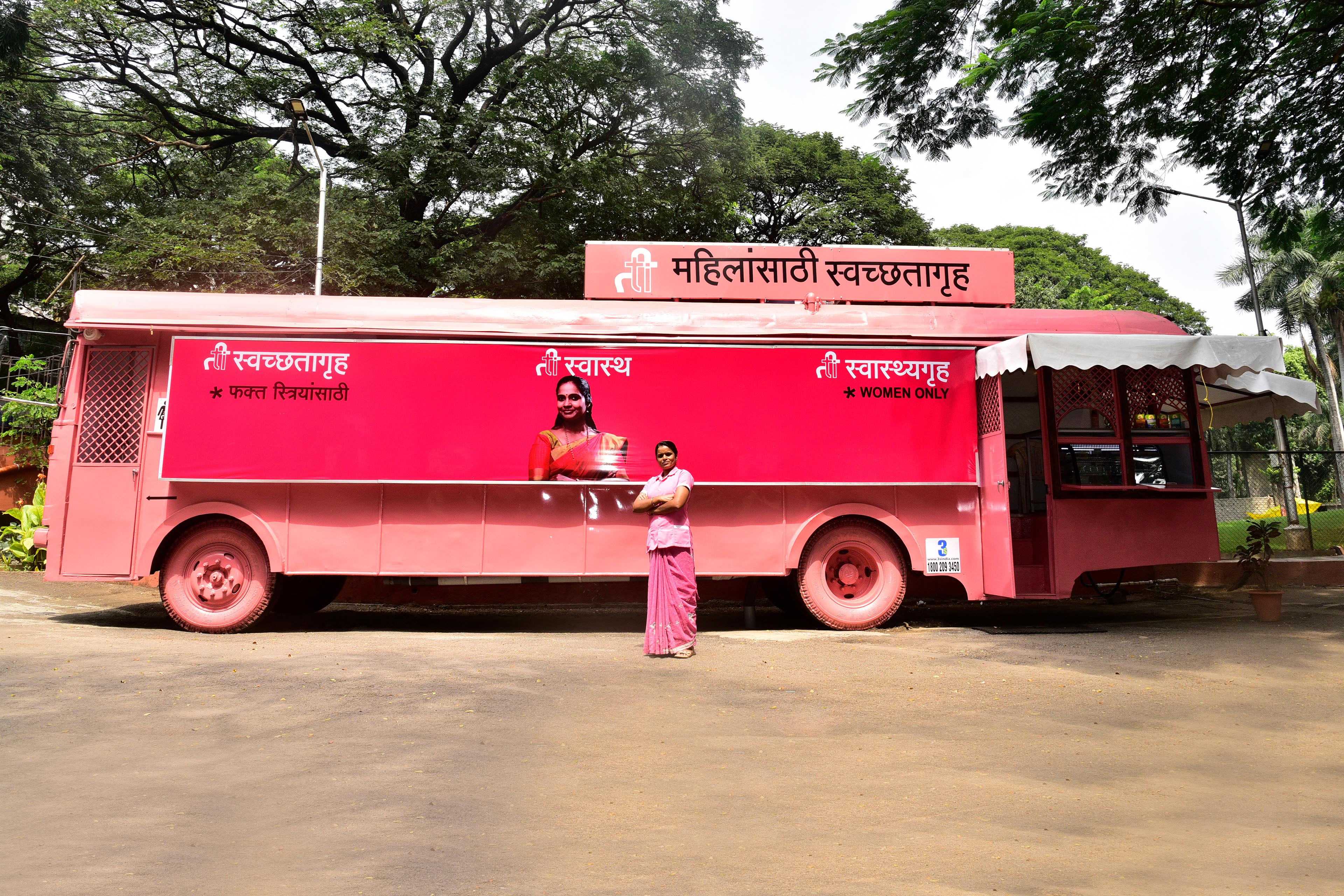EY refers to the global organization, and may refer to one or more, of the member firms of Ernst & Young Global Limited, each of which is a separate legal entity. Ernst & Young Global Limited, a UK company limited by guarantee, does not provide services to clients.

Closing five vital gaps can rebalance finance in service of a diverse and thriving network of entrepreneurial climate innovators.
In brief
- Impact entrepreneurs and innovative financial institutions are signaling the business model innovations needed to help put the world on a 1.5°C pathway.
- With the right conditions, they and other changemakers could be going further, faster, to realize the full transformative potential of sustainable business.
- Entrepreneurs call for cross-sector collaboration to shift mindsets and rebalance the financial system in service of a diverse ecosystem of climate solutions.
“The future is already here,” says the famous quote from Walter Gibson, “It’s just not evenly distributed.” Judging from analysis by Project Drawdown, a world-leading resource for climate solutions, this aphorism is true of better answers to the climate emergency. That analysis suggests it’s possible to achieve drawdown — the point at which atmospheric greenhouse gas levels stop climbing and start to steadily decline — as early as the mid-2040s by scaling solutions already in hand.1
Amid fatalism at one extreme and distant promises of salvation at the other, it’s important to keep reminding ourselves of this, because the time for action is now. And the good news is there’s plenty of inspiration to be found, both among the innovators featured in a new report from EY and Ashoka, and the wider impact entrepreneurship ecosystem that the global EY organization supports through the EY Ripples program.
Collaborating with Ashoka
Since 1980, the Ashoka network has been identifying and supporting the world’s leading social entrepreneurs, launching over 3,800 enterprises in 90 countries. Learning from patterns in their innovations, it aims to build and mobilize a global changemaker community. This includes working with corporations and their stakeholders to develop actionable strategies for driving systems change at scale.
This mission aligns perfectly with the EY Ripples program’s focus on working with impact entrepreneurs, using EY professionals’ skills and experience to help scale business model innovations that purposefully drive progress toward the UN Sustainable Development Goals.
Accentuating the positive
Too often, the need for climate action is defined in negative terms — of the dystopian future that must be avoided — rather than exploring and actively designing for a positive vision of the future we want. That’s why this new report — What could finance do today to help climate innovators bridge gaps to a sustainable future? (pdf) — deliberately takes a different tack.
It profiles nine changemakers — including from the financial sector — who are reframing the future here and now. From forest conservation and advancing circular supply chains, to ethical banking and driving investment in nature-based solutions, they’re innovating new products, services and business models with long-term value creation for people, society and the planet at their core.
“Better answers to the interconnected challenges of climate change and social inequality already exist, they just need to be scaled.” says Sriram Kuchimanchi, Founder and CEO of Smarter Dharma, one of those nine featured enterprises.
“We’re grateful to EY and Ashoka teams for shining a light on how the financial system can better support this; also for EY Ripples workshops, run off the back of this research, to brainstorm ideas that can help us achieve scale faster.”
Rebalancing finance in service of changemakers of all sizes
As impressive as their achievements are, in-depth interviews with their leaders crystalize a number of important gaps that not only act as anchors on impact enterprises’ capacity to scale, but also the ability to realize the systems-level change and sustainability gains the world needs in the race to net zero and beyond.
Every year over the next decade, the world will need to mobilize trillions of dollars to transform business, decarbonize the economy and enhance climate resilience. At COP26, financial institutions with more than US$130 trillion in assets under management committed to supporting the world achieving a state of net zero by 2050.² Making sure that a fair share of that capital flows to entrepreneurial innovation is vital and not just in terms of impact enterprises capacity to achieve scale faster.
Sustainability is everybody’s business and the healthy circulation of capital to small and mid-sized enterprises at local and regional scale, not just to large corporations, is critical. Their agility, ingenuity, and deep understanding of people and place is key to accelerating the spread of culturally relevant climate innovations. Closing the following gaps offers five ways to create far more favorable conditions for those innovations to flourish and achieve their full transformative potential:
Closing the long-term orientation gap
Entrepreneurs’ perceived flaws in the current financial system include the narrow focus on short-term profit maximization, the belief that capital must only seek the highest rate of financial return, and the blurring of investment and speculation, which contribute to a vicious cycle of chasing short-term returns over long-term, sustainable impact.
They call upon investors for a shift in mindset — rebalancing priorities and expectations, focusing on investment in the real economy, and taking a more integrated view of impact, risk and return. This would inherently encourage a more positive, long-term, holistic perspective, in turn leading to deeper consideration of, and greater value being attached to, the beneficial social, cultural and environmental outcomes of any given investment.
Closing the ecosystem diversity gap
Allied to patterns of thinking that lead to an outsized focus on maximizing short-term financial returns is the emphasis on achieving economies of scale, which, in driving out diversity and redundancy, can be hugely detrimental to systemic resilience. By contrast, a vibrant and interconnected web of locally relevant climate responses can cumulatively achieve global impact, while each individually honors the specific contours of community and place.
Entrepreneurs call upon financial institutions to prioritize the healthy circulation of capital to small and mid-sized enterprises at regional and local scale, not just to large corporations, so as to empower the diffusion of culturally relevant innovations. They also encourage greater participation of large corporations in local sustainable innovation ecosystems, as a means to achieve their own sustainability goals.
Closing the pioneer financing gap
While it’s common to think in binary terms — of pure philanthropic capital at one end of the spectrum and commercial investment at the other — the reality is that multiple forms of capital are needed to support impact enterprises through different phases of their development.
While investors adopting a more long-term, holistic perspective can help to some degree, it’s only part of the equation. Another is the development of more blended financing, specifically designed to accelerate positive societal and environmental impacts. Entrepreneurs call for the development of new public-private partnerships and financial instruments that can better support them to test, iterate and scale breakthrough ideas.
Closing the outbound impact gap
Many of the entrepreneurs we spoke with see the rise of environmental, social and governance (ESG) initiatives as a positive sign that social and environmental concerns are now firmly on top of the corporate agenda. Nonetheless, considerable skepticism persists around the ability of ESG to address systemic risks and failures, and to drive the kind of deep business model transformation needed to put the world on a 1.5°C pathway.
Such skepticism isn’t limited to issues of consistency and comparability. It also includes the inward-looking nature of most ESG frameworks — i.e., predominantly concerned with how social and environmental upheaval might compromise business-as-usual, rather than how business-as-usual might compromise the health of social and environmental systems.
Entrepreneurs challenge policymakers and standard setters to transform those frameworks to take greater account of companies’ outbound impacts on people and planet. This would drive increased recognition that the health and vitality of economic, social and environmental systems are interdependent.
Closing the incentives gap
Entrepreneurs share the view that governments could and should be doing more to establish a better operating environment for climate innovators to flourish. This not only includes better regulation to curb undesirable behaviors and outcomes, but also stronger incentives to positively encourage the right ones.
A prime example would be reimagining tax systems, rooted in goals of stock management, rather than throughput. This would essentially involve shifting from taxation of renewable resources (including human labor) to consumption of nonrenewable materials and energy, and the production of undesired wastes and emissions. Such changes could help to promote regional circular economies over a linear global one, based on local reuse of materials, and serve to increase the value and competitiveness of material-preserving business models.
Calling for urgent cross-sector collaboration
None of these interventions should be made in isolation, nor in one-size-fits-all fashion. As entrepreneurs’ calls to action imply, rebalancing finance in service of sustainable innovation requires increased collaboration between financial institutions, large corporations and governments — not only to re-establish a different set of guiding principles, but also to continually sense and respond to the actions, behaviors and relationship dynamics they spawn.
It won’t be easy, but the prize is worth the effort. It’s a key step toward accelerating the advent of a livable, sustainable future — one in which we can meet the needs of current and future generations within the means of a flourishing planet; where long-term business success flows from solving the problems of people and planet, and better answers to the climate crisis are more equitably available to all.
Summary
With the world needing to mobilize trillions of dollars to transform business, decarbonize the economy and enhance climate resilience, the financial system has a critical role to play in realizing a sustainable future. A new report from EY and Ashoka highlights the importance of closing five critical gaps to rebalance finance in service of a diverse and thriving network of entrepreneurial climate innovators.
Related articles
Is your ESG data unlocking long-term value?
Better environmental, social and governance (ESG) insight and data analytics could be critical to delivering long-term value. Find out more.
Eight ways impact enterprises can transform the sanitation economy
Lessons from leading sanitation entrepreneurs can help scale better answers to the global sanitation crisis. Learn more.
How can boards strengthen governance to accelerate their ESG journeys?
With an increasing focus on sustainability, European boards must address ESG factors to unlock new sources of value creation. Find out how.
How EY can Help
-
Impact entrepreneurs are purposefully driving progress toward the UN Sustainable Development Goals (SDGs). From digital tools to long-term capacity building services, we are helping their life-changing businesses achieve greater scale and impact.
Read more -
Supporting organizations with physical and transition risks associated with climate change, and assisting them with market and regulatory changes.
Read more -
Discover how EY's strategic transformation services can help your organization drive strategic transformation with long-lasting results.
Read more





